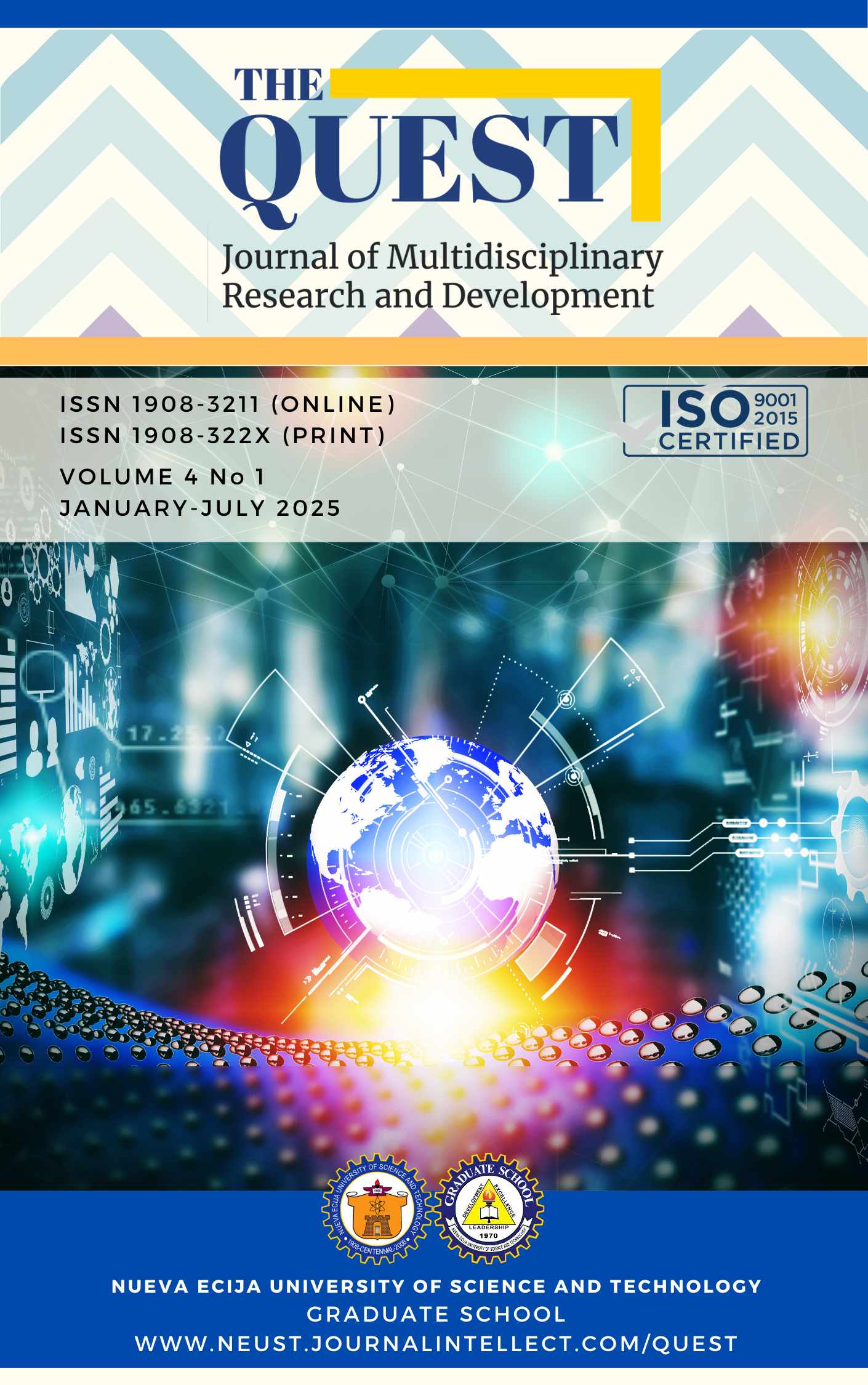The Modern Classrooms Project: A Meta-Analysis of Blended, Self-Paced, and Mastery-Based Learning in K-12 Science Education

Published 07/25/2025
Keywords
- Modern Classrooms Project,
- Blended Learning,
- Self-Paced Instruction,
- Mastery-Based Assessment,
- K–12 Science Education
- Student Engagement,
- Instructional Innovation,
- Equity in Education,
- Educational Technology,
- Self-Regulated Learning ...More
How to Cite
Copyright (c) 2025 The QUEST: Journal of Multidisciplinary Research and Development

This work is licensed under a Creative Commons Attribution-NonCommercial 4.0 International License.
Abstract
This meta-analysis examines the Modern Classrooms Project (MCP), an instructional model incorporating blended learning, self-paced progression, and mastery-based grading in K-12 science education. Drawing from empirical studies published between 2019 and 2024, this study synthesizes quantitative and qualitative findings to assess MCP’s effectiveness in enhancing student engagement, academic performance, and self-regulated learning. The analysis reveals that MCP promotes autonomy, motivation, and conceptual mastery through flexible learning pathways and individualized instruction. Challenges such as adapting lab-based instruction, ensuring equity in technology access, and managing teacher workload are discussed. Recommendations include structured scaffolding, blended lab implementation, mastery-aligned assessments, and professional development. The findings support MCP as a scalable and equitable instructional model aligned with 21st-century educational goals.
References
- Anderson, R., & Parker, T. (2022). Mastery learning in modern classrooms: A review of pedagogical shifts. Journal of Innovative Teaching, 17(2), 45-61.
- Brown, L., & Wilson, P. (2020). Blended learning and self-paced instruction: Evaluating the Modern Classrooms Project model. Educational Technology Research, 12(3), 78-95.
- Brookhart, S. M. (2020). Grading and group work: How do I assess individual learning when students work together? ASCD.
- Cheng, L., Ritzhaupt, A. D., & Antonenko, P. (2019). Effectiveness of flipped classrooms for K–12 students: A meta-analysis. Review of Educational Research, 89(5), 758-795.
- Clark, S., & Mitchell, H. (2021). Equity and accessibility in digital classrooms: The impact of self-paced learning on diverse student populations. Education Policy Review, 29(1), 88-107.
- Deanon, T. R., Barnett, R., & Farah, K. (2021). The middle school modern classroom: Why a blended, self-paced, mastery-based grading classroom is ideal for middle school students. In Handbook of Research on Innovations in Non-Traditional Educational Practices (pp. 1-20). IGI Global.
- Dunn, R. H. (2023). The Modern Classrooms Project: Student efficacy and achievement (Doctoral dissertation, East Tennessee State University).
- Graham, C. R., Borup, J., Short, C. R., & Archambault, L. (2019). K-12 blended teaching: A guide to personalized learning and online integration. EdTech Books.
- Guskey, T. R. (2007). Revisiting Benjamin S. Bloom's “Learning for mastery.” Journal of Advanced Academics, 19(1), 8–31.
- Horn, M. B., & Staker, H. (2015). Blended: Using disruptive innovation to improve schools. Jossey-Bass.
- Jones, D., & Richardson, C. (2021). Personalized instruction and its influence on student motivation in high school settings. Journal of Secondary Education Research, 19(3), 67-84.
- Kareem, A., & Carter, B. (2022). The evolution of student-centered learning: Insights from the Modern Classrooms Project. Teaching Innovations, 23(1), 21-36.
- Lee, L. H., & Yeung, Y. Y. (2021). A scoping review of flipped classrooms in K-12 science education: Implications and recommendations for future research and practice. Journal of Computers in Mathematics and Science Teaching, 40(1), 65-97.
- Martin, F., & Bolliger, D. U. (2018). Engagement matters: Student perceptions on the importance of engagement strategies in the online learning environment. Online Learning, 22(1), 205-222.
- Miller, J., & Dawson, R. (2022). Professional development for educators: Preparing teachers for self-paced learning environments. Teacher Education Quarterly, 36(3), 91-109.
- Modern Classrooms Project. (2020–2023). Research and resources on blended, self-paced, and mastery-based learning. Retrieved from https://www.modernclassrooms.org
- Nguyen, T., Harrison, K., & Patel, S. (2021). Student engagement in self-paced classrooms: A longitudinal study of the Modern Classrooms Project. Journal of Educational Research, 18(4), 112-129.
- Panadero, E. (2017). A review of self-regulated learning: Six models and four directions for research. Frontiers in Psychology, 8, 422.
- Smith, L., Green, M., & Cooper, N. (2021). Technology-enhanced learning in the wake of COVID-19: Evaluating the effectiveness of self-paced instruction. Educational Technology & Society, 24(2), 123-139.
- Sturgis, C., & Casey, K. (2018). Quality principles for competency-based education. iNACOL.
- Tawfik, A. A., Reeves, T. D., Stich, A. E., Gill, A., & Hong, C. (2020). The nature and level of learner engagement in a flipped learning environment: A comparison of traditional, online, and flipped classrooms. Interactive Learning Environments, 28(4), 564-581.
- Vega, R. (2020). Using the Modern Classrooms Project instructional model to promote student engagement and achievement in middle school mathematics (master’s thesis, University of Nebraska-Lincoln).
- Wang, Y. (2023). Exploring the impact of blended learning models on student achievement: A case study of Modern Classrooms. Journal of Pedagogical Studies, 22(1), 34-50.
- Zimmerman, B. J. (2002). Becoming a self-regulated learner: An overview. Theory Into Practice, 41(2), 64–70.
